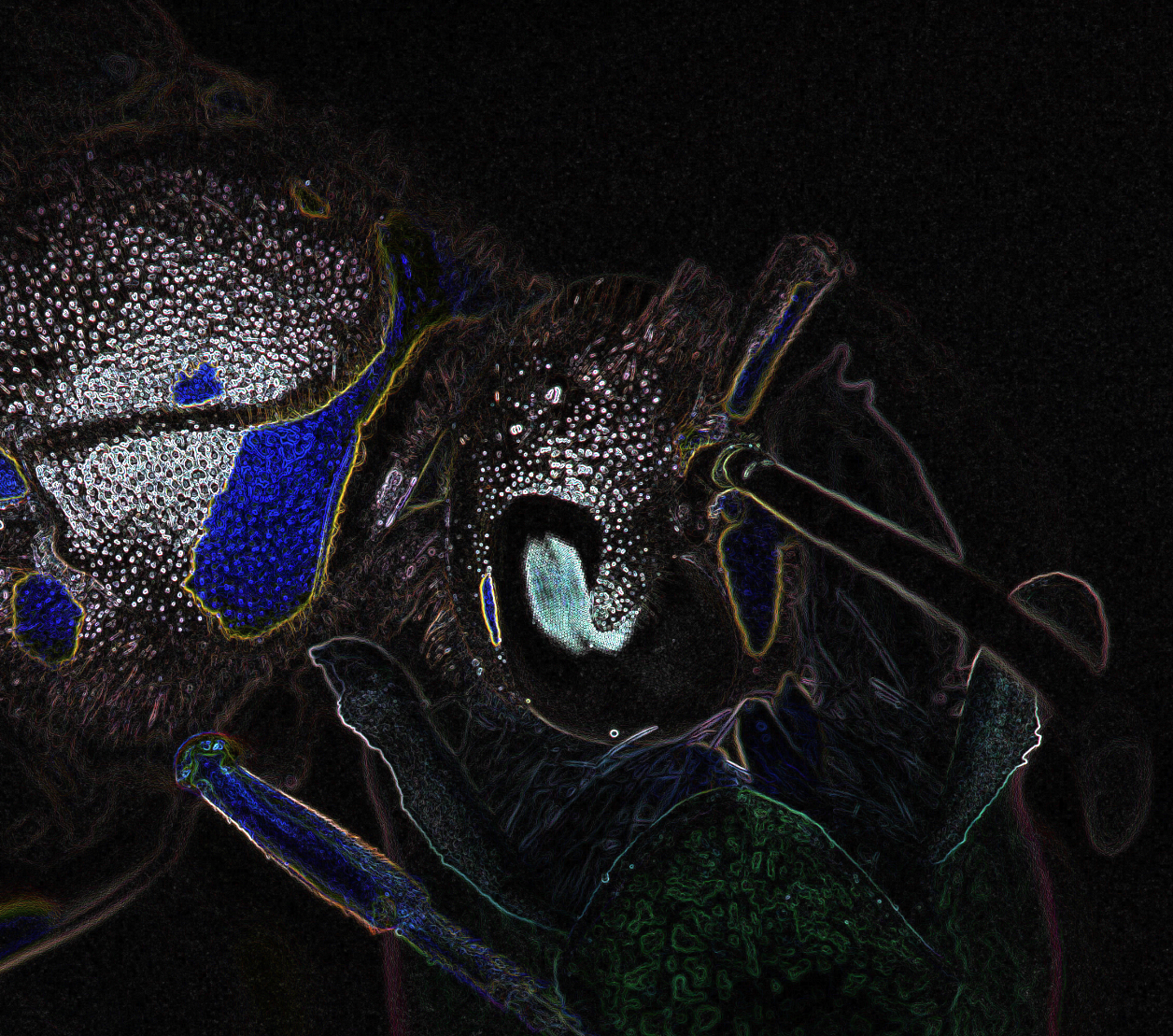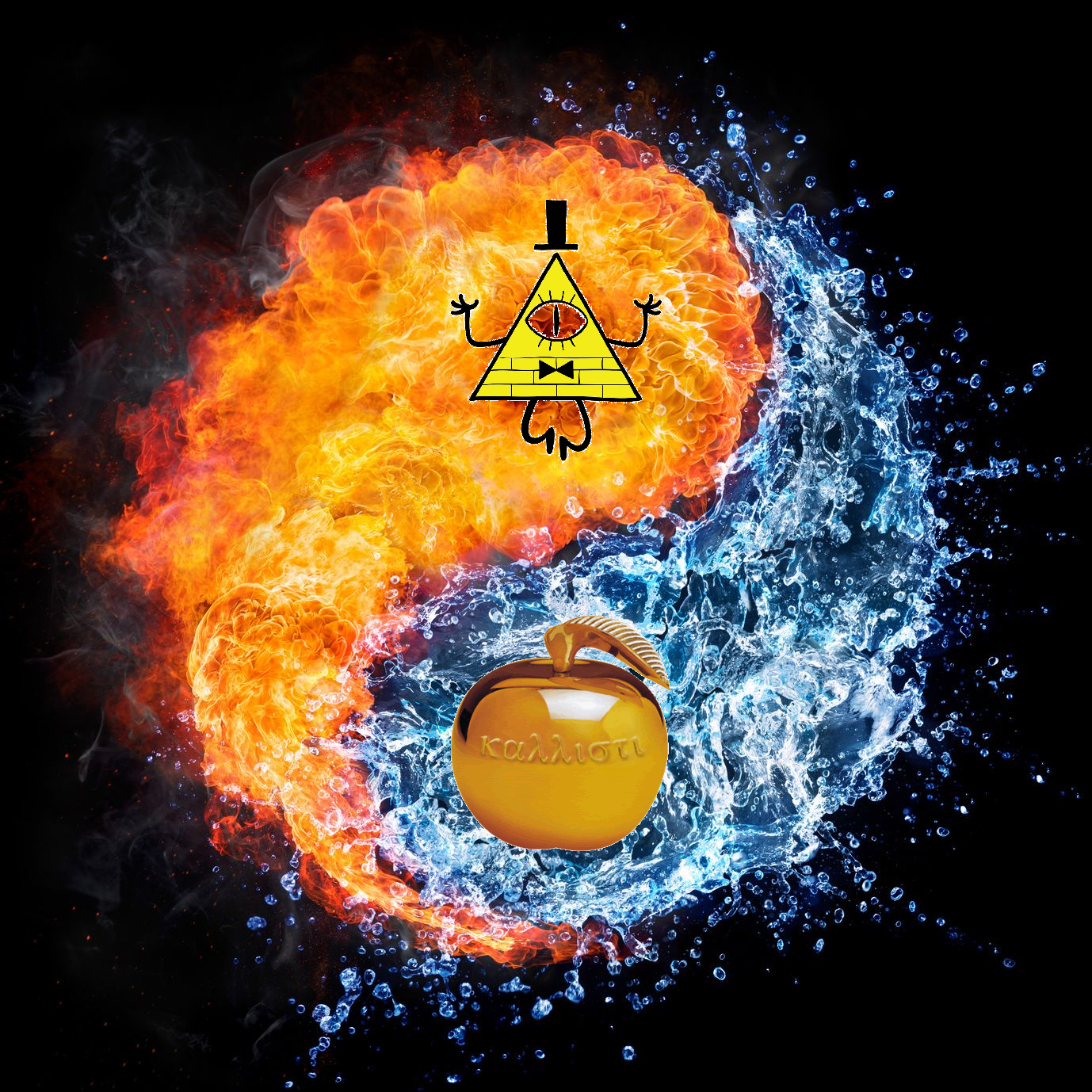“Our primary conclusion across all scenarios is that without enough fresh real data in each generation of an autophagous loop, future generative models are doomed to have their quality (precision) or diversity (recall) progressively decrease,” they added. “We term this condition Model Autophagy Disorder (MAD).”
Interestingly, this might be a more challenging problem as we increase the use of generative AI models online.
- argv_minus_one ( @argv_minus_one@beehaw.org ) English46•2 years ago
Note that humans do not exhibit this property when trained on other humans, so this would seem to prove that “AI” isn’t actually intelligent.

Almost as if current models are fancy token predictors with no reasoning about the input

do we even need to prove this? Like anyone study a bit how generative AI works know it’s not intelligent.

There’s enough arguments about that even among highly intelligent people.

Current AI is not actually “intelligent” and, as far as I know, not even their creators directly describe them as that. The programs and models existing at the moment aren’t capable of abstract thinking oder reasoning and other processes that make an intelligent being or thing intelligent.
The companies involved are certainly eager to create something like a general intelligence. But even when they reach that goal, we don’t know yet if such an AGI would even be truly intelligent.

Wasn’t the echo chambers during the covid pandemic kind of proof that humans DO exhibit the same property? A good amount will start repeating stuff about nanoparticles and some black lint in a mask are worms that will control your brain?
- argv_minus_one ( @argv_minus_one@beehaw.org ) English1•2 years ago
That only happened to some humans. Something must be seriously wrong with them.

Are we sure they were humans? Maybe they were ChatGPT 2.

I don’t think LLMs are intelligent, but “does it work the same as humans” is a really bad way to judge something’s intelligence

Even if we look at other animals, when they learn by observing other members of their own species, they get more competent rather than less. So AIs are literally the only thing that get worse when trained on their own kind, rather than better. It’s hard to argue they’re intelligent if the answer to “does it work the same as any other lifeform that we know of?” is “no”.

Are there any animals that only learn by observing the outputs of members of their own species? Or is it a mixture of that and a whole bunch of their own experiences with the outside world?

Humans (and animals) learn through a combination of their own experiences and observing the experiences of others. But this actually proves my point: if you feed an AI its own experiences (content it has created in response to prompts) and the experiences of other AIs (content they have produced in response to prompts), it cycles itself into oblivion. This is ultimately because it cannot create anything new.
This is why Model Autophagy Disease occurs, I think. Humans, when put in repetitive scenarios, will actively work to create new stimuli to respond to. This varies from livening up a boring day by doing something ridiculous, to hallucinating when kept in extreme sensory deprivation. The human mind’s defence against repetitive stimuli is to literally create something new. But the AI’s can’t do that. They literally can’t. They can’t create anything that doesn’t have a basis in their training data, and when exposed only to iterations of their own training data (which is ultimately what all AI-generated content is: iterations of the training data), there is no process that allows them to break out of that repetitive cycle. They end up just spiralling inwards.
From a certain perspective, AI’s are therefore essentially parasites. They cannot progress without sucking in more human-generated content. They aren’t self-sustaining on their own, because they literally cannot create the new ideas needed to prevent degradation of their own data sets.
From your other comments here, it seems like you’re imagining a fully conscious mind sitting alone in a box, with nothing to react to. But that’s not the case: AIs aren’t sapient, going mad from a lack of stimulation. They are completely dormant until prompted to do something, and then they create an output that is statistically likely from the data set they’ve been trained on. If you add no new data, the AI doesn’t change. It doesn’t seek new stimuli. It doesn’t create new ideas while waiting for someone to prompt it. The only way it can change and create anything new is if it’s given more human-generated content to work with. If you give it content from other AI’s, that alters the statistical probabilities behind its output. If the AIs were actually conscious minds sitting alone in boxes, then exposing them to content created by other AIs would, in fact, be new stimuli that could generate new ideas, in the same way that a lonely human meeting another lonely human would quickly strike up a conversation and get all kinds of ideas.

You’re caught up in an idea that has been going around since long before any AI systems had been built
Humans rarely, if ever, produce something new. We stumble upon a concept or apply one idea to another thing
Neural networks are carefully distilled entropy. They have no subjective biases and no foundation - they’re so good at being original that they default to things useless to humans.
I like to think of training like a mold, or a filter. You only want things in the right shape to come through - the more you train, the more everything coming through looks the same.

I mean, it’s always a mixture but yes, animals can learn new behaviours purely by watching (corvids and monkeys for example).

“It’s always a mixture” is the key part, though. We haven’t run an experiment like this on a human or animal (and even if it were practical to do so it’d probably be horribly abusive).

Humans are not entirely trained on other humans, though. We learn plenty of stuff from our environment and experiences. Note this very important part of the primary conclusion:
without enough fresh real data in each generation

Math for example is something one could argue is purely taught by humans.

Dogs can do math and I’m quite sure I’ve never taught my dog that deliberately.
Even for humans learning it, I would expect that most of our understanding of math comes from everyday usage of it rather than explicit rote training.

If you let the AI feed on its own bullshit long enough it will eventually vote for Donald Trump

AI incest at work. Just look at that Hapsburg jaw.

Love it. AI incest is the perfect term for it haha.

Good!
Was that petty?
But, you know, good luck completely replacing human artists, musicians, writers, programmers, and everyone else who actually creates new content, if all generative AI models essentially give themselves prion diseases when they feed on each other.

You know how when you’re on a voice/video call and the audio keeps bouncing between two people and gets all feedback-y and screechy?
That, but with LLMs.

I only have a small amount of experience with generating images using AI models, but I have found this to be true. It’s like making a photocopy of a photocopy. The results can be unintentionally hilarious though.

But…isn’t unsupervised backfeeding the same as simply overtraining the same dataset? We already know overtraining causes broken models.
Besides, the next AI models will be fed with the interactions from humans with AI, not just it’s own content. ChatGPT already works like this, it learns with every interaction, every chat.
And the generative image models will be fed with AI-assisted images where humans will have fixed flaws like anatomy (the famous hands) or other glitches.
So as interesting as this is, as long as humans interact with AI the hybrid output used for training will contain enough new “input” to keep the models on track. There are already refined image generators trained with their own but human-assisted output that are better than their predecessor.

People in this thread seem really eager to jump to any “aha, AIs aren’t intelligent after all” conclusions they can grab hold of. This experiment isn’t analogous to anything that we put real people or animals through and seems like a relatively straightforward thing to correct for in future AI training.

Muahahahahahahaha.
Looks like we found a relatively easy way to “poison” an AI dataset silently. Just feed it AI output.
I could see this mechanic being exploited by websites to provide a bottomless amount of junk text that only a bot doing content scraping would see.

That paper makes a bunch of(implicit) assumptions that make it pretty unrealistic: basically they assume that once we have decently working models already, we would still continue to do normal “brain-off” web scraping.
In practice you can use even relatively simple models to start filtering and creating more training data:
Think about it like the original LLM being a huge trashcan in which you try to compress Terrabytes of mostly garbage web data.
Then, you use fine-tuning (like the instruction tuning used the assistant models) to increases the likelihood of deriving non-trash from the model (or to accurately classify trash vs non-trash).
In general this will produce a datasets that is of significantly higher quality simply because you got rid of all the low-quality stuff.This is not even a theoretical construction: Phi-1 (https://arxiv.org/abs/2306.11644) does exactly that to train a state-of-the-art language model on a tiny amount of high quality data (the model is also tiny: only half a percent the size of gpt-3).
Previously tiny stories https://arxiv.org/abs/2305.07759 showed something similar: you can build high quality models with very little data, if you have good data (in the case of tiny stories they generate simply stories to train small language models).In general LLM people seem to re-discover that good data is actually good and you don’t really need these “shotgun approach” web scrape datasets.

Given the prevalence of bots and attempts to pass off fake data as real though, is there still any way to reliably differentiate good data from bad?

Yes: keep in mind that with “good” nobody is talking about the content of the data, but rather how statistically interesting it is for the model.
Really what machine learning is doing is trying to deduce a probability distribution
qfrom a sampled distributionx ~ p(x).
The problem with statistical learning is that we only ever see an infinitesimally small amount of the true distribution (we only have finite samples from an infinite sample space of images/language/etc…).So now what we really need to do is pick samples that adequately cover the entire distribution, without being redundant, since redundancy produces both more work (you simply have more things to fit against), and can obscure the true distribution:
Let’s say that we have a uniform probability distribution over[1,2,3](uniform means everything has the same probability of 1/3).If we faithfully sample from this we can learn a distribution that will also return
[1,2,3]with equal probability.
But let’s say we have some redundancy in there (either direct duplicates, or, in the case of language, close-to duplicates):
The empirical distribution may look like {1,1,1,2,2,3} which seems to make ones a lot more likely than they are.
One way to deal with this is to just sample a lot more points: if we sample 6000 points, we are naturally going to get closer to the true distribution (similar how flipping a coin twice can give you 100% tails probability, even if the coin is actually fair. Once you flip it more often, it will return to the true probability).Another way is to correct our observations towards what we already know to be true in our distribution (e.g. a direct 1:1 duplicate in language is presumably a copy-paste rather than a true increase in probability for a subsequence).
<continued in next comment>

The “adequate covering” of our distribution
pis also pretty self-explanatory: We don’t need to see the statement “elephants are big” a thousand times to learn it, but we do need to see it at least once:Think of the
pdistribution as e.g. defining a function on the real numbers. We want to learn that function using a finite amount of samples. It now makes sense to place our samples at interesting points (e.g. where the function changes direction), rather than just randomly throwing billions of points against the problem.That means that even if our estimator is bad (i.e. it can barely distinguish real and fake data), it is still better than just randomly sampling (e.g. you can say “let’s generate 100 samples of law, 100 samples of math, 100 samples of XYZ,…” rather than just having a big mush where you hope that everything appears).
That makes a few assumptions: the estimator is better than 0% accurate, the estimator has no statistical bias (e.g. the estimator didn’t learn things like “add all sentences that start with an A”, since that would shift our distribution), and some other things that are too intricate to explain here.Importantly: even if your estimator is bad, it is better than not having it. You can also manually tune it towards being a little bit biased, either to reduce variance (e.g. let’s filter out all HTML code), or to reduce the impact of certain real-world effects (like that most stuff on the internet is english: you may want to balance that down to get a more multilingual model).
However, you have not note here that these are LANGUAGE MODELS. They are not everything models.
These models don’t aim for factual accuracy, nor do they have any way of verifying it: That’s simply not the purview of these systems.
People use them as everything models, because empirically there’s a lot more true stuff than nonsense in those scrapes and language models have to know something about the world to e.g. solve ambiguity, but these are side-effects of the model’s training as a language model.
If you have a model that produces completely realistic (but semantically wrong) language, that’s still good data for a language model.
“Good data” for a language model does not have to be “true data”, since these models don’t care about truth: that’s not their objective!
They just complete sentences by predicting the next token, which is independent of factuallity.
There are people working on making these models more factual (same idea: you bias your estimator towards more likely to be true things, like boosting reliable sources such as wikipedia, rather than training on uniformly weighted webscrapes), but to do that you need a lot more overview over your data, for which you need more efficient models, for which you need better distributions, for which you need better estimators (though in that case they would be “factuallity estimators”).
In general though the same “better than nothing” sentiment applies: if you have a sampling strategy that is not completely wrong, you can still beat completely random sample models. If your estimator is good, you can substantially beat them (and LLMs are pretty good in almost everything, which means you will get pretty good samples if you just sample according to the probability that the LLM tells you “this data is good”)For actually making sure that the stuff these models produce is true, you need very different systems that actually model facts, rather than just modelling language. Another way is to remove the bottleneck of machine learning models with respect to accuracy (i.e. you build a model that may be bad, but can never give you a wrong answer):
One example would be vector-search engines that, like search engines, retrieve information from a corpus based on the similarity as predicted by a machine learning model. Since you retrieve from a fixed corpus (like wikipedia) the model will never give you wrong information (assuming the corpus is not wrong)! A bad model may just not find the correct e.g. wikipedia entry to present to you.

So we have generation loss instead of AI making better AI. At least for now. That’s strangely comforting.

The summary said:
without enough fresh real data in each generation
So as long as you’re mixing enough fresh data in you should be fine.

Its like making a photocopy of a photocopy.

needs more .jpg

MadAI’s disease.
I guess we didn’t learn when we did it with cows.

For the love of God please stop posting the same story about AI model collapse. This paper has been out since May, been discussed multiple times, and the scenario it presents is highly unrealistic.
Training on the whole internet is known to produce shit model output, requiring humans to produce their own high quality datasets to feed to these models to yield high quality results. That is why we have techniques like fine-tuning, LoRAs and RLHF as well as countless datasets to feed to models.
Yes, if a model for some reason was trained on the internet for several iterations, it would collapse and produce garbage. But the current frontier approach for datasets is for LLMs (e.g. GPT4) to produce high quality datasets and for new LLMs to train on that. This has been shown to work with Phi-1 (really good at writing Python code, trained on high quality textbook level content and GPT3.5) and Orca/OpenOrca (GPT-3.5 level model trained on millions of examples from GPT4 and GPT-3.5). Additionally, GPT4 has itself likely been trained on synthetic data and future iterations will train on more and more.
Notably, by selecting a narrow range of outputs, instead of the whole range, we are able to avoid model collapse and in fact produce even better outputs.
We’re all just learning here, but yeah, that’s pretty interesting to learn about effective synthetic data used for training.

I forget where I heard this quote:
Pre-LLM web scrapes are like low-background steel

So, the most valuable Reddit archives are the ones that were already made before they set ruinous prices on their APIs. Nice.

gonna file this away for five or ten years from now…

It’s like when the cows are fed chicken shit, and the chickens are fed cow bones.


